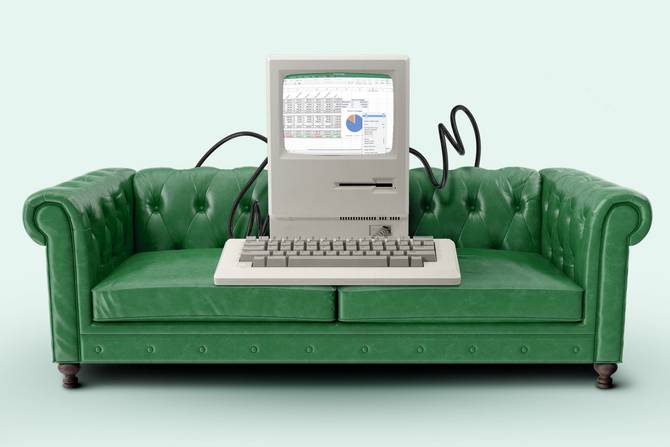Hello, HR Brew crew! On this day in 1831, the University of Alabama opened its doors in Tuscaloosa for the first time. It’s always good to have a few fun facts like these ready for campus recruiting. Can I get a Roll Tide?
In today’s edition:
 HR test takers HR test takers
 Narcan in the workplace Narcan in the workplace
 Show us your desk! Show us your desk!
—Sam Blum, Kristen Parisi, Aman Kidwai
|
|
Sdi Productions/Getty Images
Thinking about studying for a test might evoke flashbacks of high school algebra, but many professionals might eventually have to roll up their sleeves and study again to increase their chances of career advancement. For people people, this means investigating accreditations and certificates along with the resources that can help them prepare.
According to Amy Dufrane, CEO of the HR Certification Institute (HRCI), getting a certification is a way to burnish one’s résumé and stand out from the crowd. People who get certified “do it to demonstrate that they’re committed to the profession. They know what they’re talking about. And they know what good HR means to a company.”
Why take a test? HR trade groups, such as SHRM and HRCI, as well as various universities and colleges, offer different accreditations in the field. Like traditional university degrees, they demonstrate various levels of mastery in certain disciplines. The most common are Professional in Human Resources (PHR) and Senior Professional in Human Resources (SPHR) certifications, which are offered by HRCI. SHRM has a different acronym for its certifications, using SHRM-CP and SHRM-SCP.
According to HRCI, PHR certs deal more with the day-to-day operations of HR management, whereas SPHR delves into organizational strategy on a more granular level. HRCI offers exams year-round, while SHRM will offer tests May through July and December through February 2024 this year, according to its 2023 certification handbook.
ZipRecruiter data shows that SHPR certified professionals make an average of $94,266 annually, while those with PHR certs make $71,325. The national average for a “human resources professional” is $65,299.
Keep reading.—SB
|
|
TOGETHER WITH GREAT PLACE TO WORK
|
|
Justin Sullivan/Getty Images
Opioids claimed the lives of an estimated 107,600 Americans in 2021, the CDC reported. Naloxone is a proven way to save the life of someone suffering from an opioid overdose. But it typically takes nearly 10 minutes for EMS to get to someone experiencing an overdose. Now Narcan—the nasal spray version of naloxone—is becoming more accessible, allowing employers to potentially save a coworker in distress.
Wider availability. Last month, the Food and Drug Administration announced that Narcan can be sold over the counter for the first time, the New York Times reported.
“Naloxone can mean the difference between life and death for someone experiencing an overdose and—as a city and a country—we have every reason to want people to have it in hand,” Ashwin Vasan, the health commissioner of New York City, told the NYT.
In the workplace. Employers have an important role to play in combating the opioid epidemic, according to experts. In 2020, nearly 400 people overdosed and died at work, according to the Bureau of Labor Statistics, and many employers feel they wouldn’t know how to handle an overdose emergency.
In places like Ontario, Canada, some businesses will be required to keep Narcan on site. While the US doesn’t have laws requiring employers to carry the drug, the CDC has encouraged workplaces to set up naloxone protocols since 2021. And the National Safety Council recommends that employers “establish workplace policies and procedures on responding to an opioid overdose with naloxone.”
Jessica Kriegel, chief scientist of workplace culture at Culture Partners, told HR Brew that employers need to remember that anyone can be an addict, and they may not know who’s dealing with substance use disorder. She recommends employers keep Narcan as part of their safety kit. “It’s just like having an epi pen,” she explained. “People may not have ever administered an epi pen, but it’s a simple process and it's there if you need it.”—KP
|
|
Gmast3r/Getty Images
Here at HR Brew, we’re interested in learning more about how people work, and how the way they work is changing. With that in mind, we’re asking HR professionals to tell us about their desk setups.
What are you proud of in your workspace? Do you keep memories with you while you work? What’s your emotional support animal/plant/action figure? If you want to show us your desk, you can submit your story here!
To start the series, Evelyn Kwong from the Another Source recruiting firm was kind enough to be our first respondent.
Tell us about your work setup and your favorite things about it.
I have a standing desk, executive chair, laptop stand, monitor arm (mounted to the adjacent wall), and standing mat for the times I actually stand.
Historically, many people worked for years for the corner office or the “office with a view.” Remote work has opened up the possibility for me of having a workspace with an ocean view.
The swinging monitor arm is mounted to the wall, and it’s the most satisfying feeling when at the end of the work day, it moves back to its place. This really opens up the space, and I have been recommending monitor arms to my colleagues.
Keep reading.—AK
|
|
SPONSORED BY CAREVALIDATE
|
|
Organized, efficient, accessible. With CareValidate’s revolutionary ADA Compliance software, HR pros can track all accommodation tasks in a single, digitally compliant space. Streamline to-dos, document storage, and SLAs, and even employ third-party medical determinations to absolve risk for complex cases. It’s an HR whiz’s dream come true—and it comes with a free 3-month trial.
|
|
Today’s top HR reads.
Stat: A lack of explicit standards around hybrid work increases the likelihood of employee turnover by 12%. (Gartner)
Quote: “We’re still believers in in-person work. And for those who are willing to work that way, we were willing to facilitate it with a relocation payment.”—Matt Calkins, chief executive of Appian, a company that paid over 100 employees to relocate to its Virginia HQ (the Wall Street Journal)
Read: Employees at Meta say that cost-cutting, layoffs, and leadership snafus are deteriorating morale at the former Silicon Valley darling. (the New York Times)
Subscribe: Check out Healthcare Brew for industry news and insights designed for medical providers, healthcare administrators, and everyone in between. Learn more and sign up here.
*This is sponsored advertising content.
|
|
-
David’s Bridal is laying off over 9,000 employees.
-
Target workers say their pay and benefits are still a source of frustration.
-
Gig workers report “wage discrimination” from apps’ algorithms.
-
ChatGPT is enabling some people to hold down more than one job.
|
|
Catch up on the top HR Brew stories from the recent past:
|
|
|








